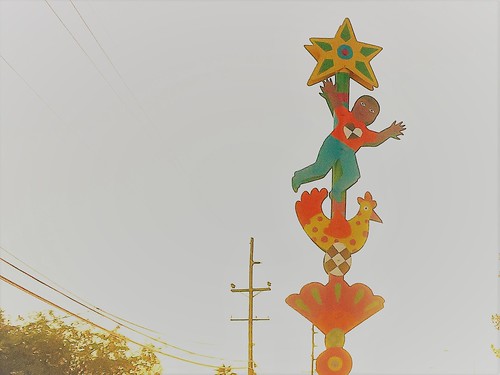 |
| House moving, Breaux Bridge, Louisiana. December 2011. |
The last Friday in April was moving day in Tucson, out of Temporary Home #2, and into what is my permanent home for the year.
Have I finally learned there is almost always a move-out surprise? Hopefully, with this move-out, I did. But before I get to that surprise ...
I visit the ghosts of moves-out past
Leaving Ferguson 2018.
Leaving El Paso 2017.
Leaving Opelousas 2016.
Leaving Alamogordo 2013.
Leaving Caucasus Georgia 2012.
The present move-out
My move from the shared house to the apartment ALMOST went smooth as silk. But suddenly I heard one of my housemates calling my name repeatedly from downstairs. “Mzuri! Mzuri!
MZURI!” I couldn’t imagine what the heck was going on, and selfishly, I felt a momentary irritation, as I was so near the finish line, with only a few tasks to complete before I left.
But I finally caught the urgency in my housemate's voice, and I skedaddled downstairs to see what was what. I imagined that one of our other housemates had collapsed and required emergency assistance.
Well, it did involve another housemate, but it seems he had gotten physical with his mate. I'll call him "Jack." In the course of my six-week stay in the shared household, I had already noticed some yellow flags about Jack's attitudes toward women in general and toward his mate, specifically.
Jack and his partner had gotten into an argument and she’d decided to leave. Jack had forcefully commandeered some personal items from her, which she needed to have in order to leave, and he refused to release the items to her.
A disturbing phone conversation with the absentee landlady, from whom the other housemate and I had requested an intervention, revealed the landlady's dismissive view of the physical and verbal intimidation that we witnessed.
In short order, Jack turned his ugly wrath onto me, dumping personal attacks on top of my head – which is his M.O. with his mate. In the moment, Jack’s diatribe rolled off my back because I knew his verbal vomit had nothing to do with me, and only had to do with Jack, but suddenly in the afternoon, after I’d got mostly unloaded into my new apartment, I felt shaken.
Blind spots
When people assault you with personally vicious words, it leaves stripes, and then when others - such as the landlady, in this instance - dismiss the verbal violence as just a passing storm, it inflames the wounds. I had several bad moments of aftershocks throughout the weekend.
It's easier to blame the victim for such onslaughts, isn't it? Or cast doubt about the target's interpretation or veracity or levels of "sensitivity"? Or just pretend it didn't happen? If we can make any of these stick, then that lets
us off the hook from having to ruffle the status quo in our family, job, faith community, volunteer organization, or social groups - wherever it is abusers swing their machetes.
I've seen it happen to me and to others in my family, social, and professional circles.
By letting ourselves off the hook from doing anything about the abusers in our midsts, we can:
- Sustain the fiction that our group or organization is tight and strong;
- Avoid making ourselves a target;
- Sidestep the time, money, and energy to remove them from their position and secure a replacement;
- Spare ourselves from public embarrassment and scrutiny; and
- Allow the abusers to continue doing the useful things they do for our group, so we don't have to step up to do them.
Heck, every day, we see our president dump slop onto the heads of anyone who disagrees with him, irrespective of their youth or their abilities to protect themselves from the onslaught emotionally, financially, socially, or professionally. Disgusting stuff. Ugly stuff.
When we turn a blind eye to such abuse, we can tolerate all kinds of awfulness. We find ways to justify our blindness.
Every day, for me, to see the headlines on the president's attack
du jour is like watching the plane plow into the World Trade Center over and over and over and over again.
I can intellectualize my experience of such abuse on both the national scale and on the domestic scale, such as what happened on my moving-out day. I can practice detachment. This is useful, up to a point. It's like rubbing sunscreen into my skin: helpful, but some harmful rays still get through.
My spirit flags at times.
Thus was my most recent moving day.


















































